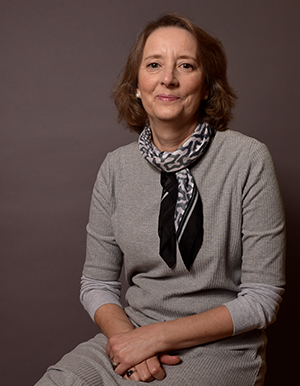Lígia M. Saraiva Lab

 |
Molecular Mechanisms of Pathogen Resistance Group addresses the survival’s mechanisms of human pathogens focus on their resistance to antimicrobials produced by the innate immune system and elucidation of bacterial haem biosynthetic pathways. Development of new antimicrobial drugs based on Carbon Monoxide (CORMs) is another research area of the group. |
|
Lígia M. Saraiva Phone (+351) 214469328 | Extension 1328 |
|
 |
Research Interests
Infections caused by pathogens represent an increasing threat to global public health as many strains are rapidly becoming resistant to all available antibiotics. Therefore, understanding how bacterial pathogens resist the immune system and identifying novel targets for therapeutic intervention is crucial for the successful treatment of infectious diseases.
One of the research topics of the group concerns the study of the mechanisms used by pathogens such as Staphylococcus aureus, Helicobacter pylori and Escherichia coli to survive the nitrosative and oxidative stresses, which are key weapons of the mammalian innate immune system’s to kill invading microorganisms.
Haem availability is essential to all organisms, including for pathogenic bacteria. We have been studying the haem biosynthesis pathways operative in Staphylococcus aureus and anaerobic sulphate-reducers of the human gut microbiota.
The group is also strongly committed to the implementation of carbon monoxide releasing compounds (CORMs) as a novel class of antibiotics, which have been shown to cause the rapid death of several pathogens.
To address these areas of research, the group combines a wide range of methodologies, such as genomics, transcriptomics, microbiology, molecular genetics, biochemistry, and mammalian cell culture technology.
Group Members
-
Sandra Carvalho, Post-doc, smcc@itqb.unl.pt
-
Jordi Zamarreno, Post-doc, jzamarreno@itqb.unl.pt
-
Mafalda Almeida, Post-doc, mafalda.almeida@itqb.unl.pt
-
Ana Mendes, PhD student, ass.mendes@itqb.unl.pt
-
Ana Oliveira, PhD student, ars.oliveira@itqb.unl.pt
-
Joana Batista, PhD student, joana.batista@itqb.unl.pt
-
Frederico Lourenço, BI, frederico.lourenco@itqb.unl.pt
Laboratory's Website
For further information please visit the laboratory's website
Selected Publications
- Videira MAM, Lobo SAL, Sousa FL, Saraiva LM. (2019) Identification of the sirohaem biosynthesis pathway in Staphylococcus aureus. FEBS J. Oct 12.
- Carvalho SM, Marques J, Romão CC, Saraiva LM (2019) Metabolomics of Escherichia coli Treated with the Antimicrobial Carbon Monoxide-Releasing Molecule CORM-3 Reveals Tricarboxylic Acid Cycle as Major Target. Antimicrob Agents Chemother. pii: e00643-19.
- Videira MAM, Lobo SAL, Silva LSO, Palmer DJ, Warren MJ, Prieto M, Coutinho A, Sousa FL, Fernandes F, Saraiva LM. 2018. Staphylococcus aureus haem biosynthesis and acquisition pathways are linked through haem monooxygenase IsdG. Mol Microbiol. 109(3):385-400.
- Silva LSO, Baptista JM, Batley C, Andrews SC, Saraiva LM. ( 2018) The Di-iron RIC Protein (YtfE) of Escherichia coli Interacts with the DNA-Binding Protein from Starved Cells (Dps) To Diminish RIC Protein-Mediated Redox Stress. J Bacteriol. pii: e00527-18.
Mecanismos Moleculares da Resistência de Patógenos (PT)
No nosso grupo estudamos os mecanismos que os microorganismos patogéneos utilizam para sobreviver aos compostos químicos gerados pelo sistema imunitário. Em particular, os humanos produzem óxido nítrico e espécies reactivas de oxigénio para combater infecções virais, bacterianas ou causadas por parasitas. Pretendemos identificar e estudar a função e regulação de genes responsáveis pela sobrevivência dos microorganismos a estes stresses, utilizando uma abordagem genética, microbiana e bioquímica. Assim pretende-se elucidar como resistem os microorganismos à barreira de protecção criada pelo nosso sistema imunitário, informação que é crucial para o desenvolvimento de estratégias que diminuam a sua resistência. A sobrevivência dos organismos patogéneos aos antibióticos clássicos é actualmente um dos maiores desafios que a medicina enfrenta, sendo as estirpes resistentes causadoras de um elevado número de mortes, especialmente em ambientes hospitalares. A descoberta de novos fármacos que tenham princípios activos distintos dos antibióticos actuais é um dos grandes desafios da investigação fundamental e biomédica. O nosso grupo descobriu que o monóxido de carbono tem a capacidade de matar bactérias, e está a desenvolver estudos que permitam vir a ter um novo tipo de antibiótico com base em moléculas libertadoras de monóxido de carbono.









